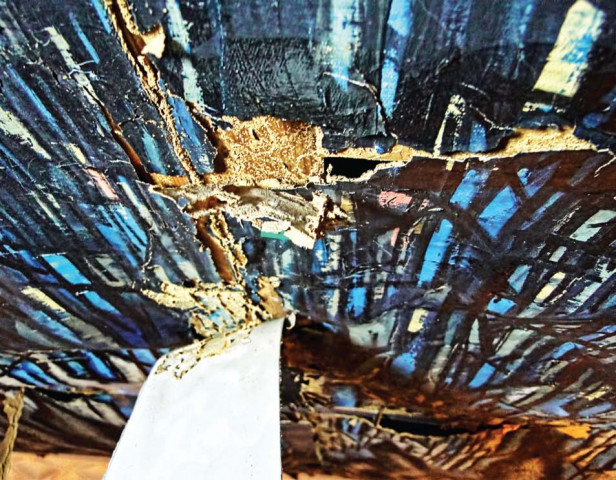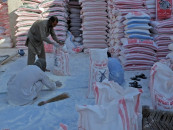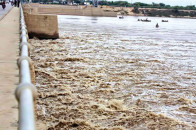Sadequain mural restoration: Museum sending artists to India for training
Conservation officer warns restoration must begin as soon as possible.

The Lahore Museum is to send four artists to India for training in oil painting restoration so they can come back and start restoring a crumbling Sadequain mural.
The artists are being sent on a two-month course and restoration work is likely to begin in about three months, Museum director Humaira Alam told The Express Tribune on Tuesday.
The mural, called Evolution of Man, consists of 48 canvas panels, each measuring six feet by eight feet, and had covered the ceiling of the entrance of the museum since 1973. It was dismounted for conservation work and put in storage last year.
“Each panel takes many days to repair, so the whole restoration may take four to five years,” Alam said.
She said that the final decision on which artists to send to India for training rested with Saleema Hashmi, who is chairwoman of a committee set up to oversee the mural’s restoration. Hashmi is out of the country so she did not attend a meeting of Lahore Museum directors, board of governors and technical staff on Monday to discuss the project, which has been without a project manager since December 7.
The mural was damaged primarily due to exposure to the sun and partially by termite attacks over 40 years. Two Indian experts, Srikumar Menon and Mahindra Singh Gill, began dismantling it in March 2010 and their work was finished in June by four artists, all fine arts graduates from the National College of Arts and Punjab University.
The panels were wrapped in polythene, stacked close together and stored in a room behind the museum’s art gallery. Over the next six months, Hafiz Abdul Azeem, the conservation officer at the Lahore Museum, examined the panels and compiled a report of the damage done and the work required to restore each one. He explained why it was essential that restoration work begin as soon as possible.
“This is not good for the mural,” said Azeem of the storage. “The canvas is so delicate that it dissolves at the touch.” He said the plastic wrapping created an anaerobic microenvironment that accelerated the damage.
“Lack of air causes the paint to dry and shed quickly,” he said. “The restoration should be started without delay to avert further damage to the mural.”
He said training artists in restoration work was necessary for careful preservation of artifacts.
He said only the Lahore and Karachi museums had conservation laboratories.
No museum in Pakistan had separate conservationists for different artifacts, like manuscripts, stone sculptures, clayware or paintings. “A single person runs the show,” he said.
Published in The Express Tribune, June 8th, 2011.



















COMMENTS
Comments are moderated and generally will be posted if they are on-topic and not abusive.
For more information, please see our Comments FAQ